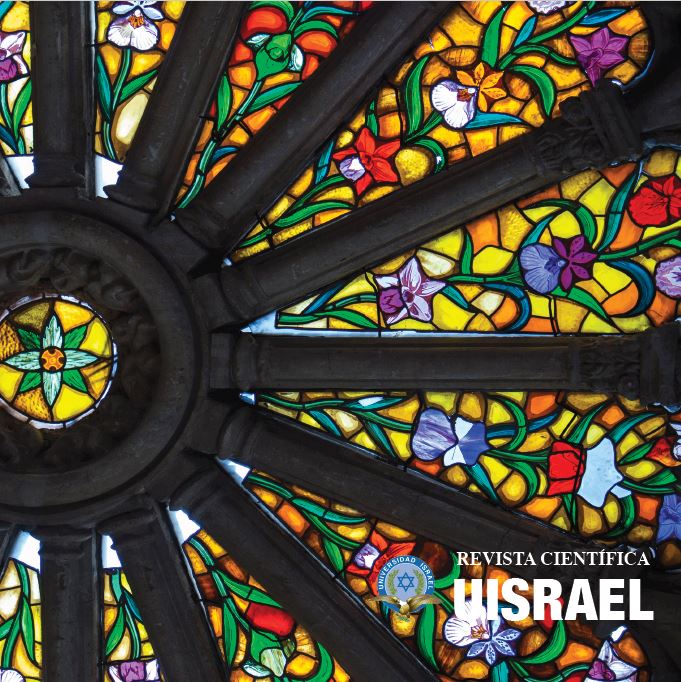CONTAMINACIÓN LUMÍNICA, DESAFÍO PARA LOS NUEVOS TIEMPOS
DOI:
https://doi.org/10.35290/rcui.v2n3.2015.17Resumen
El crecimiento de la humanidad no sólo en cantidad de individuos, también en tecnología, expectativa de vida y usos de recursos se ha extendido por todo el planeta. Estos factores van de la mano con un crecimiento económico el cual ha sido liderado por los países desarrollados, generando un crecimiento de sus principales ciudades y por lo tanto un aumento demográfico de las misma, traduciéndose en mayor demanda de servicios en tal sentido utilizando la totalidad de las horas disponibles de un día, haciendo de la noche una alternativa para la producción laboral y de recreación.
En las últimas décadas, el grado y la intensidad de la iluminación artificial de la noche se han incrementado, generando efectos negativos sobre hábitats y especies, en particular en la salud humana.Descargas
Referencias
CINZANO, P. 1997. Inquinamento luminoso e protezione del cielo Notturno. Memorie, Classe di Scienze Fisiche, Matematiche e Naturali, Volume XXXVIII, Istituto Veneto di Scienze, Lettere ed Arte, Venezia http://www.lightpollution.it/cinzano/libro/index.html.
CINZANO, P. 2002. Technical measures for an effective limitation of the effects of light pollution. En CINZANO, P. (coord.), Light Pollution and the Protection of the Night Environment, Thiene (Italia), 2002 http://www.lightpollution.it/istil/venice/index.html.
Universidad Nacional de San Juan EL VALOR DEL RECURSO CIELO – PAISAJE NOCTURNO Y LA CONTAMINACION LUMINICA Yanina N. Buchiniz1, María Gabriela Torre1, Hector S. Lepez2 1 FATU UNCo (Neuquén – Argentina , 2 OAFA – FCEFN- UNSJ. yanina_buchiniz@yahoo.com.ar
HOLLAND, J. 2008. What is light pollution, and how do we quantify it? http://amper.ped.muni.cz/light/lp_what_is.pdf.
REGLAMENTO TÉCNICO ECUATORIANO RTE INEN 069 “Alumbrado Público”
La Unión Astronómica Internacional (UAI)
Ley catalana para la protección del medio nocturno
Sociedad Española de Astronomía
Departamento de Astrofísica y Ciencias de la Atmósfera de la Universidad Complutense de Madrid
National Aeronautics And Space Administration (NASA), Last Updated: Aug. 11, 2015
US NATIONAL Library of medicine National institutes of Health, Rajaratnam SM, < Arendt J. Health in a 24h-society. Lancet. 2001
US NATIONAL Library of medicine National institutes of Health, Stevens RG.
US NATIONAL Library of medicine National institutes of Health, Reiter RJ, Tan DX, Korkmaz A, Erren TC, Piekarski C, Tamura H, et al. Light at night, chronodisruption, melatonin suppression, and cancer risk: a review. Crit Rev Oncog.2007.
US NATIONAL Library of medicine National institutes of Health, Craig LA, McDonald RJ. Chronic disruption of circadian rhythms impairs hippocampal memory in the rat. Brain Res Bull. 2008.
US NATIONAL Library of medicine National institutes of Health, Erren TC, Reiter RJ, Piekarski C. Light, timing of biological rhythms, and chronodisruption in man. Naturwissenschaften. 2003.
US NATIONAL Library of medicine National institutes of Health, Rahman SA, Kollara A, Brown TJ, Casper RF. Selectively filtering short wavelengths attenuates the disruptive effects of nocturnal light on endocrine and molecular circadian phase markers in rats. Endocrinology. 2008.
Descargas
Publicado
Número
Sección
Licencia
Derechos de autor 2015 Revista Científica UISRAEL

Esta obra está bajo una licencia internacional Creative Commons Atribución-CompartirIgual 4.0.
Los autores que participen de los procesos de evaluación y publicación de sus ediciones conservan los derechos de autor y ceden a la revista el derecho a la primera publicación, tal como establecen las condiciones de reconocimiento en la licencia Creative Commons Reconocimiento 4.0 Internacional (CC BY), donde los autores autorizan el libre acceso a sus obras, permitiendo que los lectores copien, distribuyan y transmitan por diversos medios, garantizando una amplia difusión del conocimiento científico publicado.
- Toda derivación, a partir de esta obra, deberá citar la fuente y a la primera publicación en esta revista. Se permiten derechos comerciales no lucrativos sobre sus contenidos.
- Los autores pueden realizar otros acuerdos contractuales independientes y adicionales para la distribución no exclusiva de la versión del artículo publicado en esta revista, es decir, podrán incluirlo en un repositorio institucional o publicarlo en un libro, siempre que indiquen claramente que el trabajo se publicó por primera vez en esta revista.
- Se permite y recomienda a los autores compartir su trabajo en línea, con la finalidad de intercambios productivos para una mayor y más rápida citación del trabajo como lo establece los efectos del movimiento ‘Acceso Abierto’.
- No puede aplicar términos legales o medidas tecnológicas que restrinjan legalmente a otros de hacer cualquier cosa que permita la licencia: https://creativecommons.org/licenses/by/4.0/deed.es
- La Revista Científica es financiada completamente de los aportes realizados por nuestra entidad editora: Universidad Tecnológica Israel; por tal motivo, no establece cargos o cobros de ninguna índole a sus autores y colaboradores, así como tampoco genera pagos o remuneraciones de ningún tipo a ellos.
- Se asignará un Digital Object Identifier (DOI) a cada publicación.







